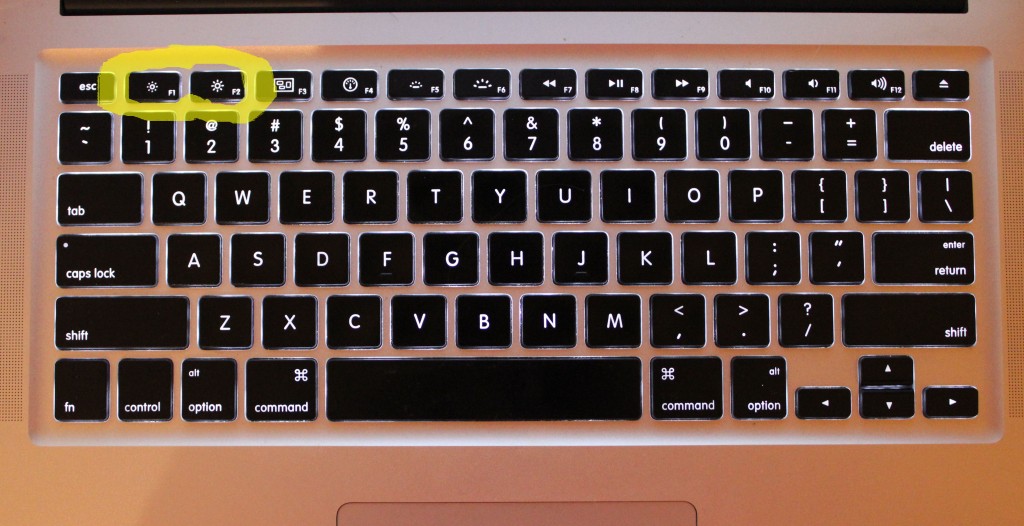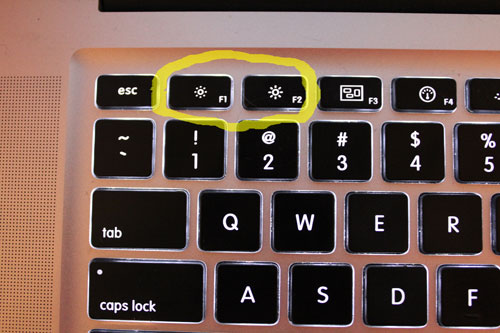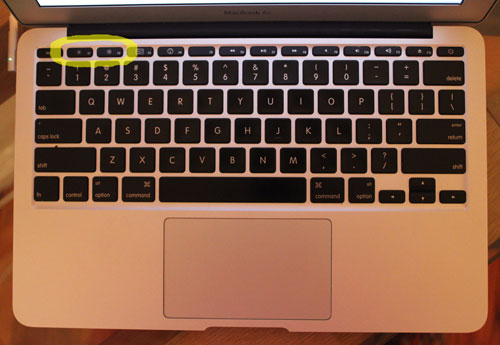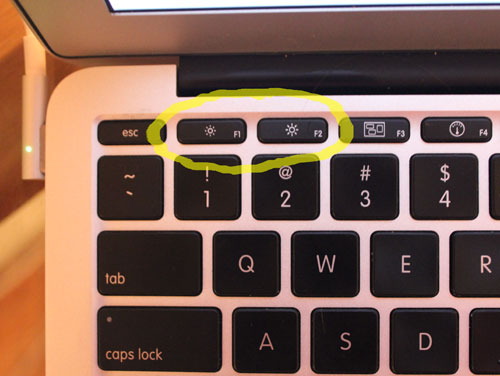Buying an external display for a MacBook Air or MacBook Pro? Here’s some quick buying tips, including how to find a cheap, thin, full HD screen for $152.
Already got an external screen? There’s tips for the best way to use your external monitor with your MacBook.
Most of these tips also apply for getting a main display for the Mac Pro and Mac Mini, as well as getting a second iMac external display. Read on for tips, and a bit about Apple’s new Thunderbolt Display.
Tips for Buying an External Display for a MacBook Pro or MacBook Air
- Get a wide screen. They’re great for wide content, like video or spreadsheets. They’re also good for viewing two windows side-by-side on one screen. Luckily, widescreens are pretty much standard now.
- Get a full HD (1080p) screen instead of a lower resolution screen. Lots of pixels means seeing lots of content with good detail. Less scrolling to do. More context. Full HD screens (1920 x 1080) are now cheap – $170 for an entry-level display.
- Buy around a 24 inch size. If you get a smaller HD screen, it may be hard to read. I find 30 inch and larger screens too big to take in – it’s like being at an IMAX, I’m moving my head around excessively to take in the contents of the screen. With a 30 inch plus screen, I also feel washed out from all the light blasting into my eyes all day.
- Strongly prefer screens with a DVI port. Other ports will work (VGA and HDMI), but DVI was designed for high resolution digital computer monitors. If the screen only has a VGA port, it’s probably pretty old technology. If the display only has HDMI ports, the display is intended as TV – it may be fine, but it probably wasn’t designed to be a computer monitor, to be used close up, for a whole day. To me, TVs have a different quality to their image – I haven’t asked a tech about why – whether the panel, refresh rate, viewing angles, color range or image processing is different between an LCD monitor and an LCD TV.
- Make sure the screen is bright enough for you. Nearly all screens have sufficient brightness now, but there are still cheap screens with low brightness and contrast. A dull screen makes you stare harder to perceive everything.
- If you’re collaborating with others, consider screens with wider viewing angles. Cheap screens can become hard to see as soon as you stand up (the panel’s vertical viewing range) or move left or right (the panel’s horizontal viewing range). The more expensive the screen, generally the further you can move and still see the image properly. This means others can sit or stand beside you, and check out your project.
- Try out higher-grade screens. More expensive screens have more accurate color (gamut), they’re brighter, have better contrast ratios, faster response, and have HDMI interfaces (e.g. for a Blueray player). Better screens do “feel” better to work off – there’s a crispness that makes them easy to read, yet not tiring. Sometimes the quality difference is only obvious side-by-side: you could check out a few external screens at a computer store.
- Buy a Mini DisplayPort to DVI Adapter. Apple sell them ($29). You’ll need it to connect your MacBook Air or Pro to the external display.
At home, I was on a budget and got an AOC RAZOR LED e2343F 23.0″ Full HD LED Monitor Ultra-slim 12mm, LED Panel & Backlight for $169. (This was in Australia from i‑Tech.) I was shocked by how good the image was for the price. It’s light & slim. The white base looks strange with the black bezel. At the time of writing it’s available in the U.S. for $152, according to Google Product Search.
At work, I have a LG display. It’s more expensive than the AOC screen ($250 vs $169), and a bit bigger (24 inch vs 23 inch). For me, the LG feels like just the right size. The LG can also rotate in its stand to a vertical orientation (i.e. portrait/tallscreen instead of landscape/widescreen). Portrait mode is useful for word processing , or designing pages for print, where you can see a whole page at a time. If you’d like the LG’s product code, leave a comment below, and I’ll look it up.
Tips for Using External Screens
- Turn the screen brightness down to where your eyes feel relaxed. It took me 28 years to work this out! Over bright screens wear me out. I can feel my eyes straining. Make the screen bright enough so the color is good, and text is readable, yet soft enough that your eyes don’t feel achy.
- Have a main screen directly in front of you, with a keyboard and trackpad in front of it. I’ve run off two screen systems for years. When I sit in the middle of two screens, my neck is either twisted left or right all day. Not so good. I’ve found it works better to have a a big screen directly in front of me, with windows I look at 90% of the time. I then put the smaller screen to one side, with windows that I look at less often (e.g. email or a webpage I have open to refer to). Since the laptop will be the smaller screen, this means springing for an external keyboard and mouse. Worth it. If you use the wireless Apple keyboard and trackpad or mouse, it’s easier to take your MacBook away – two less cables to unplug.
- Three screens may not be heaven. I’ve ran off three screens for about six months. I slowly noticed three screens felt crowded and that I got tired from three screens blasting photons at me. Dropping back to a single big main screen front and center has felt much better, and I’ve got more energy at the end of the day.
- Try one big screen, instead of a big screen plus laptop on the side. If it feels better with just one big screen, you can close your MacBook Pro or Air and it will keep on running (instead of sleeping), provided your external monitor, keyboard and mouse are connected. Ah, the simple life!
Apple Thunderbolt Display
Apple has offered a fairly giant Mac display display for awhile, both as a separate screen – the 27 inch Cinema Display, and well as built in to the 27 inch iMac. Now the Cinema Display has been upgraded to the 27 inch Thunderbolt Display.
Thunderbolt technology uses the video cable to send high speed data to external devices as well as sending video to the monitor. The Thunderbolt Display has a Gigabit Ethernet port, a few USB ports, a Firewire port, and a webcam, and they all come courtesy of plugging in one tiny mini DisplayPort connector to your Mac Pro or Air. You can daisy chain more Thunderbolt devices onto the monitor, like disk arrays.
Thunderbolt turns the tiny “Mini DisplayPort” connector on the current MacBook Air and MacBook Pro models into a docking station connector. You can flounce around with your tiny two pound, 11 inch MacBook Air. Then get to the office (or come home), plug in one tiny cable, and suddenly that tiny laptop has become a big powerful computer workstation, with a big display, fast networking and large capacity disk storage. It makes the Thunderbolt connector the modern day equivalent of a docking station, but way more convenient.
I suspect it’s the way computing will go: light, small, fast, thin laptops. When you need big screens and storage, you just plug in one cable. Thunderbolt, made by Intel, is finding its way on Windows PCs and laptops in 2012. One day day you’ll probably be able to just plug your iPad or iPhone into a Thunderbolt Display to get a full sized workstation.
I tried out the Thunderbolt Display’s predecessor, the 27″ Cinema Display. It is a gorgeous display. It has the same crazy better-than-HD resolution: 2560 by 1440 pixels. (Full HD is 1920 by 1080 pixels.) It’s pretty big – I don’t know if I could live with the “IMAX head swivel” effect, but perhaps it would work if I put a big distance between the monitor and I – I’d need a deep desk. I’d really like to try one out for awhile. (If you have one, please comment below to let us know how you find it!)
I mention the Thunderbolt Display in case you have the money, appreciate the quality, and it’s not too big for you. I’ve tested the new MacBook Air running a Cinema Display, which has similar screen specifications and video technology to the Thunderbolt display – you can see the video at MacBook Air external display.
Thanks!
Thanks for visiting Mac Crazy! Do you have any tips, questions or comments about using external monitors with MacBooks? If so, please use the comment box at the bottom of the page.
If you found this article useful, please help share it – please click the +1, Like or Share buttons below. It just takes a moment! Thank you!




